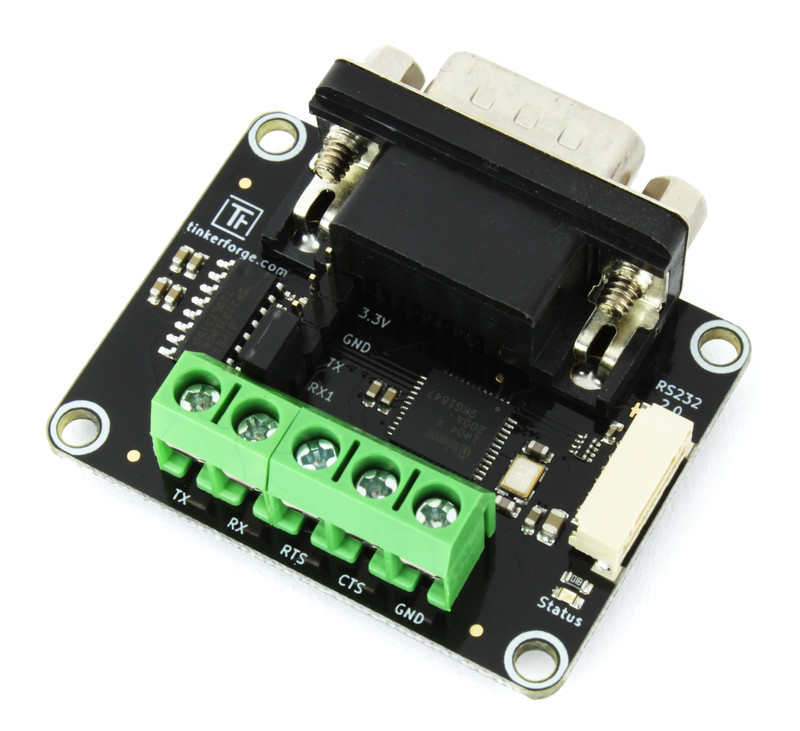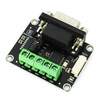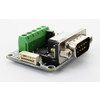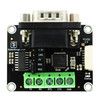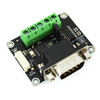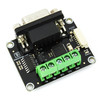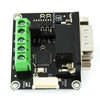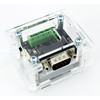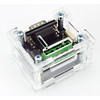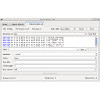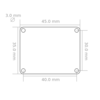- Getting Started
- Hardware
- Bricks
- Bricklets
- Accelerometer Bricklet 2.0
- Air Quality Bricklet
- Ambient Light Bricklet 3.0
- Analog In Bricklet 3.0
- Analog Out Bricklet 3.0
- Barometer Bricklet
- Barometer Bricklet 2.0
- Breakout Bricklet
- CAN Bricklet
- CAN Bricklet 2.0
- CO2 Bricklet 2.0
- Color Bricklet
- Color Bricklet 2.0
- Compass Bricklet
- DC Bricklet 2.0
- Distance IR Bricklet
- Distance IR Bricklet 2.0
- Distance US Bricklet 2.0
- DMX Bricklet
- Dual Button Bricklet 2.0
- Dust Detector Bricklet
- E-Paper 296x128 Bricklet
- Energy Monitor Bricklet
- GPS Bricklet 2.0
- GPS Bricklet 3.0
- Hall Effect Bricklet
- Hall Effect Bricklet 2.0
- Humidity Bricklet 2.0
- IMU Bricklet 3.0
- Industrial Analog Out Bricklet 2.0
- Industrial Counter Bricklet
- Industrial Digital In 4 Bricklet 2.0
- Industrial Digital Out 4 Bricklet
- Industrial Digital Out 4 Bricklet 2.0
- Industrial Dual 0-20mA Bricklet
- Industrial Dual 0-20mA Bricklet 2.0
- Industrial Dual AC Relay Bricklet
- Industrial Dual Analog In Bricklet 2.0
- Industrial Dual Relay Bricklet
- Industrial PTC Bricklet
- Industrial Quad Relay Bricklet 2.0
- IO-16 Bricklet
- IO-16 Bricklet 2.0
- IO-4 Bricklet 2.0
- Isolator Bricklet
- Joystick Bricklet
- Joystick Bricklet 2.0
- Laser Range Finder Bricklet 2.0
- LCD 128x64 Bricklet
- LCD 20x4 Bricklet
- LED Strip Bricklet 2.0
- Line Bricklet
- Linear Poti Bricklet
- Linear Poti Bricklet 2.0
- Load Cell Bricklet 2.0
- Motion Detector Bricklet 2.0
- Motorized Linear Poti Bricklet
- Multi Touch Bricklet
- Multi Touch Bricklet 2.0
- NFC Bricklet
- OLED 128x64 Bricklet 2.0
- OLED 64x48 Bricklet
- One Wire Bricklet
- Outdoor Weather Bricklet
- Particulate Matter Bricklet
- Performance DC Bricklet
- Piezo Speaker Bricklet
- Piezo Speaker Bricklet 2.0
- Real-Time Clock Bricklet
- Real-Time Clock Bricklet 2.0
- Remote Switch Bricklet 2.0
- RGB LED Bricklet 2.0
- RGB LED Button Bricklet
- Rotary Encoder Bricklet 2.0
- Rotary Poti Bricklet
- Rotary Poti Bricklet 2.0
- RS232 Bricklet
- RS232 Bricklet 2.0
- RS485 Bricklet
- Segment Display 4x7 Bricklet
- Segment Display 4x7 Bricklet 2.0
- Servo Bricklet 2.0
- Silent Stepper Bricklet 2.0
- Solid State Relay Bricklet 2.0
- Sound Intensity Bricklet
- Sound Pressure Level Bricklet
- Temperature Bricklet
- Temperature Bricklet 2.0
- Temperature IR Bricklet 2.0
- Thermal Imaging Bricklet
- Thermocouple Bricklet 2.0
- Tilt Bricklet
- UV Light Bricklet 2.0
- Voltage/Current Bricklet 2.0
- XMC1400 Breakout Bricklet
- Master Extensions
- Power Supplies
- Discontinued Products
- Timeline
- Software
- Kits
- Embedded Boards
- Specifications
RS232 Bricklet 2.0¶
Features¶
- Sends and receives serial data
- Provides RS-232 and UART-TTL interface
- Configurable baudrate, parity, stop bits, word length and flow control
Description¶
The RS232 Bricklet 2.0 can be used to extend the features of Bricks by the capability to send and receive serial data with RS-232 and 3.3V TTL signal level to communicate with other serial devices.
This Bricklet ist not galvanically isolated to the Tinkerforge system. This means that there is a direct electrical connection between the terminals of the Bricklet and the rest of the system. Dependent of the application this can lead to undesired connections, ground loops or short circuits. These problems can be prevented by using the Bricklet together with a Isolator Bricklet.
Technical Specifications¶
| Property | Value |
|---|---|
| Current Consumption | 47mW (9.4mA at 5V, idle) |
| Baudrate | 100 - 2000000baud |
| Parity | none / odd / even |
| Stop bits | 1 / 2 |
| Word length | 5 / 6 / 7 / 8 |
| Flow control | Software / Hardware / none |
| Dimensions (W x D x H) | 45 x 35 x 17mm (1.77 x 1.38 x 0.67") |
| Weight | 20g |
Resources¶
Connectivity¶
The RS232 Bricklet 2.0 provides three different ways to connect to other serial devices: classic D-Sub 9 (male) connector, 5-way terminal block or 5-way pin header. But only one of these connectors can be used at the same time.
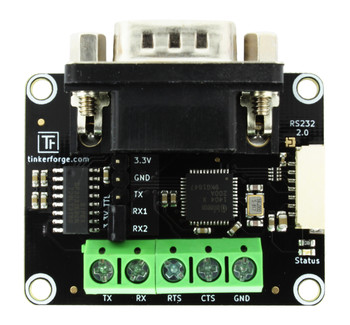
D-Sub 9 Connector¶
The D-Sub 9 (male) connector uses the RS-232 signal level. To use this connector the RX1 and RX2 pins on the pin header have to be connected by a jumper.
The connector uses the following part of standard RS-232 pinout:
| Pin | Function | |
|---|---|---|
| 2 | Received data | RX |
| 3 | Transmitted data | TX |
| 5 | Ground | GND |
| 7 | Request to send | RTS |
| 8 | Clear to send | CTS |
Terminal Block¶
The 5-way terminal block provides the same five RS-232 signals (RX, TX, RTS, CTS and GND) as the D-Sub 9 connector with the same RS-232 signal level. To use this connector the RX1 and RX2 pins on the pin header have to be connected by a jumper.
Pin Header¶
The 5-way pin header provides the received data (RX1) and transmitted data (TX) signals with 3.3V TTL signal level as well as 3.3V and GND. It does not provide RTS and CTS. To use this connector the jumper connecting the RX1 and RX2 pins has to be removed. The jumper can be stored sideways on the RX2 pin.
Test your RS232 Bricklet 2.0¶
To test a RS232 Bricklet 2.0 you need to have Brick Daemon and Brick Viewer installed. Brick Daemon acts as a proxy between the USB interface of the Bricks and the API bindings. Brick Viewer connects to Brick Daemon. It helps to figure out basic information about the connected Bricks and Bricklets and allows to test them.
Connect the RS232 Bricklet 2.0 to a Brick with a Bricklet Cable. Connect the RX1 and TX pins with a jumper to make the Bricklet read back its own output.
If you connect the Brick to the PC over USB, you should see a new tab named "RS232 Bricklet 2.0" in the Brick Viewer after a moment. Select this tab. If everything went as expected you can now type some text into the input editbox and hit enter. The same text should then show up in the textarea above.
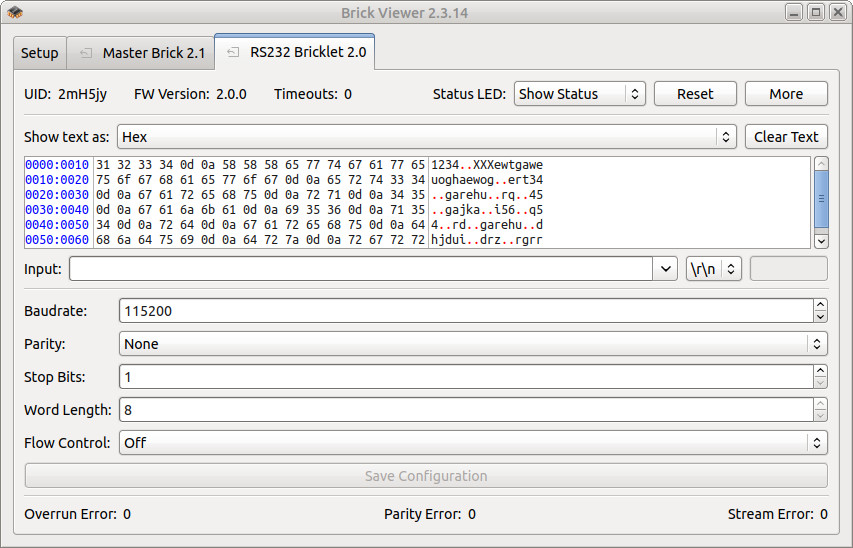
After this test you can go on with writing your own application. See the Programming Interface section for the API of the RS232 Bricklet 2.0 and examples in different programming languages.
Case¶
A laser-cut case for the RS232 Bricklet 2.0 is available.
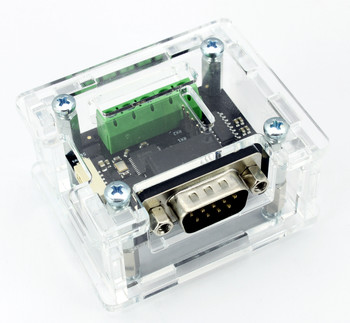
The assembly is easiest if you follow the following steps:
- Screw spacers to the Bricklet,
- screw bottom plate to bottom spacers,
- build up side plates,
- plug side plates into bottom plate and
- screw top plate to top spacers.
Below you can see an exploded assembly drawing of the RS232 Bricklet 2.0 case:
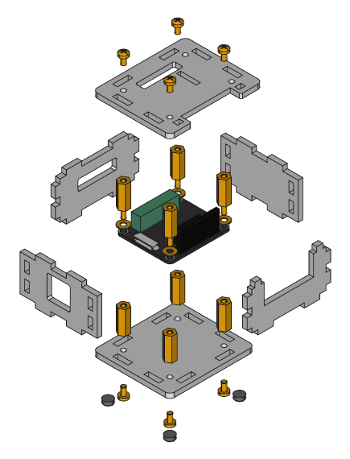
Hint: There is a protective film on both sides of the plates, you have to remove it before assembly.
Programming Interface¶
See Programming Interface for a detailed description.
| Language | API | Examples | Installation |
|---|---|---|---|
| C/C++ | API | Examples | Installation |
| C/C++ for Microcontrollers | API | Examples | Installation |
| C# | API | Examples | Installation |
| Delphi/Lazarus | API | Examples | Installation |
| Go | API | Examples | Installation |
| Java | API | Examples | Installation |
| JavaScript | API | Examples | Installation |
| LabVIEW | API | Examples | Installation |
| Mathematica | API | Examples | Installation |
| MATLAB/Octave | API | Examples | Installation |
| MQTT | API | Examples | Installation |
| openHAB | API | Examples | Installation |
| Perl | API | Examples | Installation |
| PHP | API | Examples | Installation |
| Python | API | Examples | Installation |
| Ruby | API | Examples | Installation |
| Rust | API | Examples | Installation |
| Shell | API | Examples | Installation |
| Visual Basic .NET | API | Examples | Installation |
| TCP/IP | API | ||
| Modbus | API |


